#blue and white faience
Explore tagged Tumblr posts
Text
i was doing some spring cleaning (lie)(i watched the bear S2E4 - got sad - went on denmark’s insta - got emotional - opened pinterest for fic research - got teary again - checked under the sink for pads bc surely it’s coming - rummaged af - found it??) and remembered i was given this by a Chinese exchange student who lived in the same student building as me, after i’d help her out with a lost necklace.
it just occurred to me that i could google translate with a photo, so i could read what the writing was on the box, but i’m not very trustful of the accuracy and the literal translation rather than a native one. even with the google translation, i am not sure what it is meant to mean, if the specific design on the porcelain keychain has a specific meaning, etc.
any help and reblogs would be deeply appreciated!
and to you, friend, i don’t know where you are in the world right now, but know that everytime i pick up your gift (bc silly me keeps changing its place) i think of you very, very fondly, and even many times you randomly pop into my mind and it makes me feel a little better 💙 thank you for your gift, and for the thought, and for the reminder. i hope everything is going, and always will be well 💙
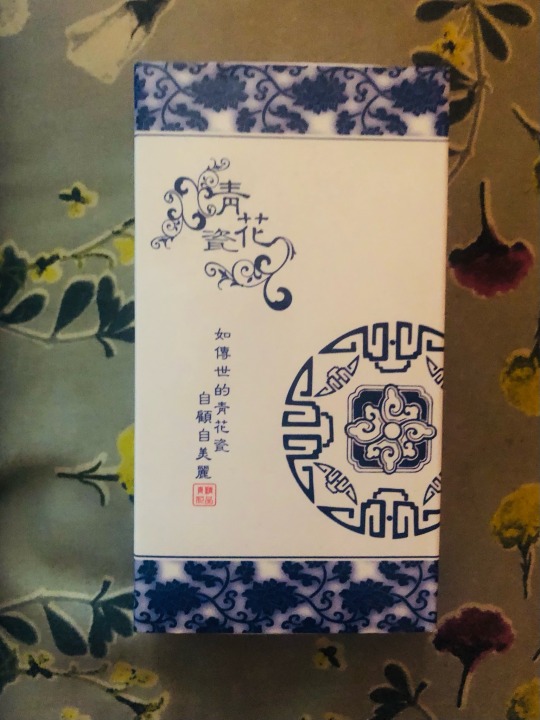
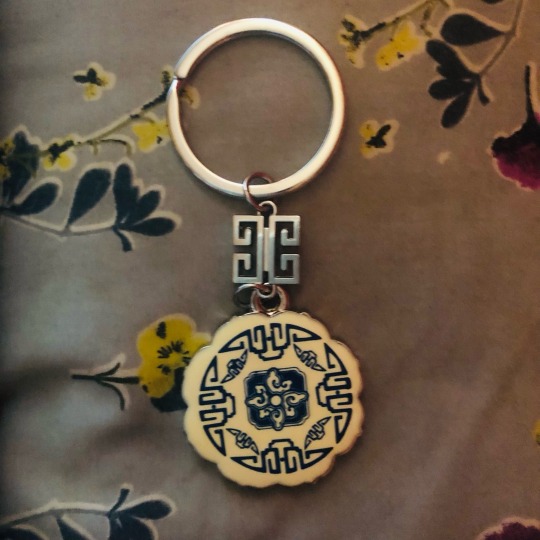

(yes, i am now crying over this porcelain piece of art and this friendly & sweet stranger)
#now how does adler tag this#lemme know if there are other tags i can add to help the search#chinese translation#mandarin translation#blue and white china#porcelain#chinese porcelain#blue and white porcelain#blanc de chine#chinese ceramics#chinese language#blue and white#blue-and-white#blue flowers#blue and white pottery#blue and white ceramics#ceramics#pottery#faience#blue and white faience#learning chinese#learning mandarin#adler.priv
8 notes
·
View notes
Text
Word List: Fashion History
to try to include in your poem/story (pt. 2/3)
Exomis - a short, asymmetrical wrap garment pinned at the left shoulder, worn by men in Ancient Greece
Eye of Horus - or Wedjat eye, is an ancient Egyptian symbol that represents the eye of the falcon-headed god Horus and symbolizes healing and regeneration and was often worn for protection
Faience - a man-made ceramic material that was often used in ancient Egypt to make jewelry and devotional objects; it is usually a blue color
Falling Band - a flat and broad white collar often with lace on the edges, worn by men and women in the 17th century
Fibula - served as a pin to both hold garments together and to show status of those with prestige or power within society; was popular in Greek culture
Fichu - a triangular shawl, usually worn by women, draped over the shoulders and crossed or fastened in the front
Fontange - a linen cap with layers of lace and ribbon, worn flat and pinned to the back of the head
French Hood - a rounded headdress for women that was popular in the 16th century (from 1540)
Frock Coat - a collared man’s coat worn through the eighteenth to the twentieth century; rose to prominence mainly in the nineteenth century, especially Victorian England; characterized as a knee-length overcoat, buttoned down to the waist, that drapes over the lower half of the body like a skirt
Frogging - ornamental braid or cording that can function as a garment closure, or be solely decorative
Gabled Hood - a woman’s headdress that is wired to create a point at the top of the head and has fabric that drapes from the back of the head
Gigot Sleeve - a sleeve that was full at the shoulder and became tightly fitted to the wrist; also called leg-of-mutton sleeve
Guipure Lace - a type of continuous bobbin lace made without a mesh ground; its motifs are connected by bridges or plaits
Himation - a rectangular cloak wrapped around the body and thrown over the left shoulder worn by the ancient Greeks
Huipilli/Huipil - a woven rectangular shirt worn by women in Central America beginning in ancient times
Jerkin - a close-fitting men’s jacket, often worn for warmth, sometimes without sleeves; worn over a doublet in the 16th and 17th centuries
Justaucorps - a long-sleeved, knee-length coat worn by men after 1666 and throughout the 18th century
Kaftan - (also caftan) is an ancient garment, which originated in ancient Persia but then spread across Central and Western Asia; a kind of robe or tunic that was worn by both men and women
Katazome (stencil printing) - a traditional Japanese method for printing designs onto fabric using a stencil and paste-resist dyes
Kaunakes - one of the earliest forms of clothing; made from goat or sheep’s wool and meant to be worn around the waist like a skirt, it is recognizable by its fringe detailing
Kente - a Ghanaian strip woven textile that has striped patterns and bright colors with corresponding meanings
Knickerbockers - or “knickers” are full or baggy trousers gathered at the knee or just below and usually fastened with either a button or buckle; were initially worn by men in the late 19th century and gradually became part of women’s fashion; the garment was usually worn as sportswear and became especially popular among golfers and female cyclists, hence the term “pedal pushers”
Kohl - a black material made out of minerals such as galena and used for eyeliner and eye protection in ancient Egypt
Labret - a type of lip-piercing worn by various cultures to indicate wealth, prosperity and beauty
Love Lock - a lock of hair from the nape of the neck hanging over the chest to show romantic attachment; it was a popular hairstyle between 1590-1650
Lurex - a shiny synthetic fiber made of aluminum-coated plastic with a glittering metallic sheen
Mantua - a jacket-like bodice with pulled back overskirt that bustled in the back, often in elaborately patterned fabric, first worn in the 17th century
Medici Collar - a collar that stands upright on the back of the neck and opens in the front; this type of ruff was introduced to France by Marie de’ Medici in the 16th century, taking her name two centuries later
Moccasins - a type of soft animal skin shoe that were worn by Indians in North America
Muff - a tubular padded covering of fur or fabric, into which both hands are placed for warmth
Mule - a backless shoe
Muslin - a simple plain-weave textile made out of cotton and available in varying weights and finishes; historically, there were also varieties of muslin in silk and wool
Needle Lace -often known as “needlepoint lace”; is a term referring to the technique in which the lace is made of entirely needle work; it developed in the 15th century and then became very popular throughout the 16th century
Nemes Headdress - starched, striped linen headdress that draped on the shoulders and had a tail at center back worn only by royals in ancient Egypt
Panes/Paning - a method of decoration using long parallel strips of fabric arranged to reveal a contrasting fabric underneath that was fashionable from the 15th-17th centuries
Panniers - an under-structure used in eighteenth-century fashion that created a shape wide at the sides and flat at the front and back
Pantalettes - (also referred to as pantaloons) are loose, pants-like undergarments that covered women’s lower halves in the late 18th and early 19th century
Particolored - the combination of different colors within the same garment along the vertical axis
Passementerie - an additional accent or embellishment in silk or metallic threads, such as an embroidered braid, tassel or fringe
Pattens - wooden-soled platform over-shoes, which were commonly worn from the 14th century to the 18th century
If any of these words make their way into your next poem/story, please tag me, or leave a link in the replies. I would love to read them!
More: Fashion History ⚜ Word Lists
#word list#writeblr#spilled ink#dark academia#terminology#fashion history#history#words#studyblr#linguistics#writing prompt#fashion#writers on tumblr#poetry#literature#poets on tumblr#lit#culture#light academia#langblr#fiction#worldbuilding#creative writing#writing tips#writing advice#writing reference#writing resources
204 notes
·
View notes
Text

Faience jerboa with a white core and white and pale blue coating with brown detailing.
Middle Kingdom, 12th Dynasty, ca. 1976-1793 BC. From Heliopolis. Now in the Fitzwilliam Museum. E.279.1939
107 notes
·
View notes
Text
I visted the Cartier exhibit in London on Wednesday, check out these jewels ↓↓
During the Second World War (1939-45), yellow gold gained popularity after platinum was banned for non-military purposes. In 1940, Cartier London supported General de Gaulle when he fled France following Nazi Germany's Invasion. Meanwhile, Cartier Paris protested the German occupation by selling caged-bird jewels in the colors of the French flag. Jacques Cartier passed away in 1941 followed by Louis in 1942, so it fell to Jeanne Toussaint, Pierre and the next generation of the family to continue the business.

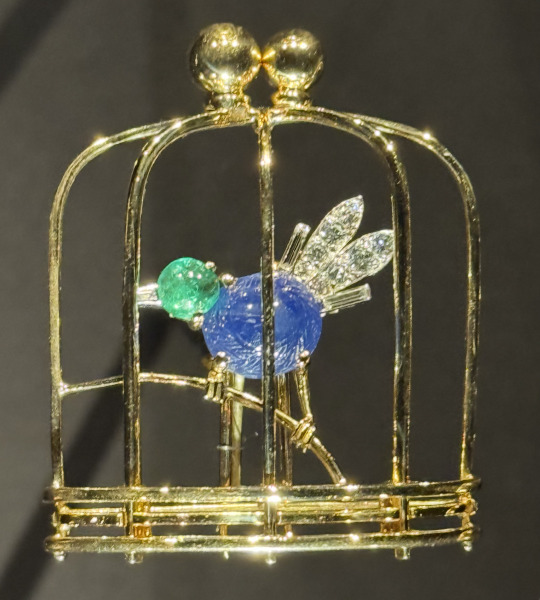
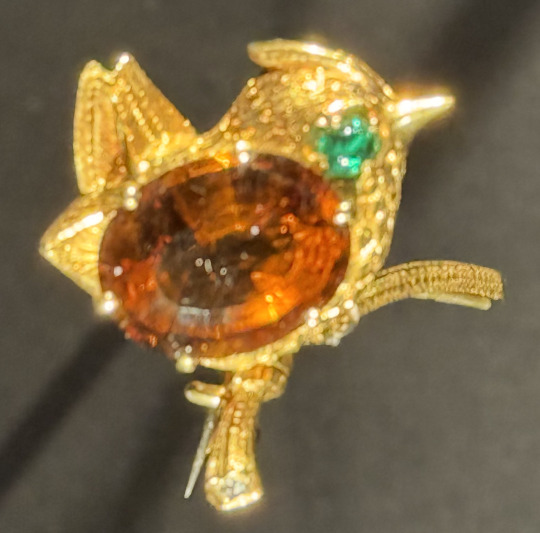

Jacqueline Kennedy received this Tank wristwatch as a gift from her then brother-in-law, Prince Stanislaw Radziwill, after family members completed the Fifty Mile Hike in Palm Beach in 1963. The hike was conceived by her husband, President John F. Kennedy, who urged the American people to take on this gruelling challenge. The watch was later acquired by media personality Kim Kardashian.
Cartier Paris for Cartier New York, 1962
Owned by Jacqueline Kennedy and later Kim Kardashian
Materials: Sapphire, yellow and rose gold, leather strap
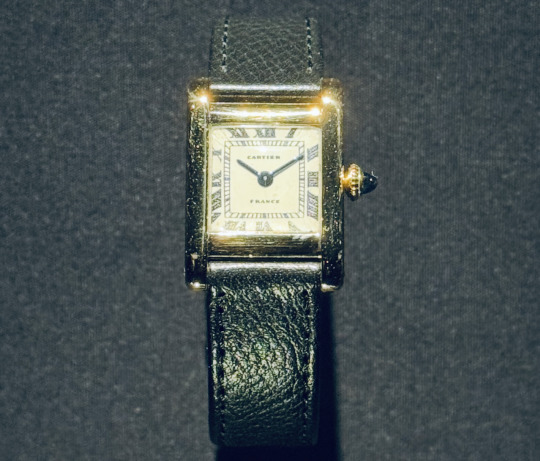
A Jewel Comes to Life
In 1968, Mexican film star Maria Félix commissioned this snake necklace from Cartier Paris, and it became one of the most extraordinary members of the Cartier menagerie of animal-inspired jewels. Bold and audacious, the necklace encapsulates the Maison’s ability to combine artistic originality and technical prowess.
The sinuous, lifelike movement of the snake was achieved by creating a complex articulated structure of platinum, which wraps around the wearer’s neck.
With 2,473 diamonds and scales enamelled in the colours of the Mexican flag, it is a perfect example of a client and jeweller collaboration.
Snake necklace
Cartier Paris, special order, 1968
Commissioned by Maria Félix
Materials: Emeralds, diamonds, enamel, platinum, white and yellow gold
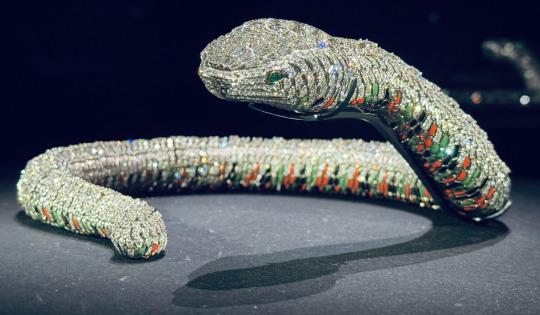
This brooch is an exceptional piece produced by Cartier London's English Art Works. It was commissioned to celebrate the 25th wedding anniversary of King Leopold III of Belgium and Princess Lilian de Rethy, sister-in-law to Jean-Jaques Cartier. Jean-Jacques travelled to the couple's home to make studies of a wooden sculpture of a stag, Lilian's favourite animal. The designers and craftsmen back in London then brought Lilian's dream to life.
Stag brooch
Materials: Rubies, emeralds, diamonds, platinum, gold

1. Scarab brooch
Cartier London, 1925
Scarab, Egypt, possibly 664–332 BC
Materials: Blue-glazed faience, citrines, onyx, diamonds, gold, platinum
2. Scarab belt buckle
Cartier Paris, 1926
Scarab, Egypt, 13th to 12th century BC
Owned by Linda Lee Thomas (Mrs. Cole Porter)
Materials: Blue-glazed faience, sapphires, diamonds, enamel, gold, platinum
3. Sekhmet brooch
Cartier Paris, special order, 1925
Lion-headed goddess Sekhmet, Egypt, 664–332 BC
Materials: Blue-glazed faience, emeralds, rubies, onyx, diamonds, enamel, platinum, gold
4. Lotus flower deity brooch
Cartier Paris for Cartier New York, special order, 1927
Features Goddess Isis, Egypt, 664–525 BC
Materials: Blue-glazed faience, emeralds, rubies, diamonds, onyx, enamel, platinum, gold


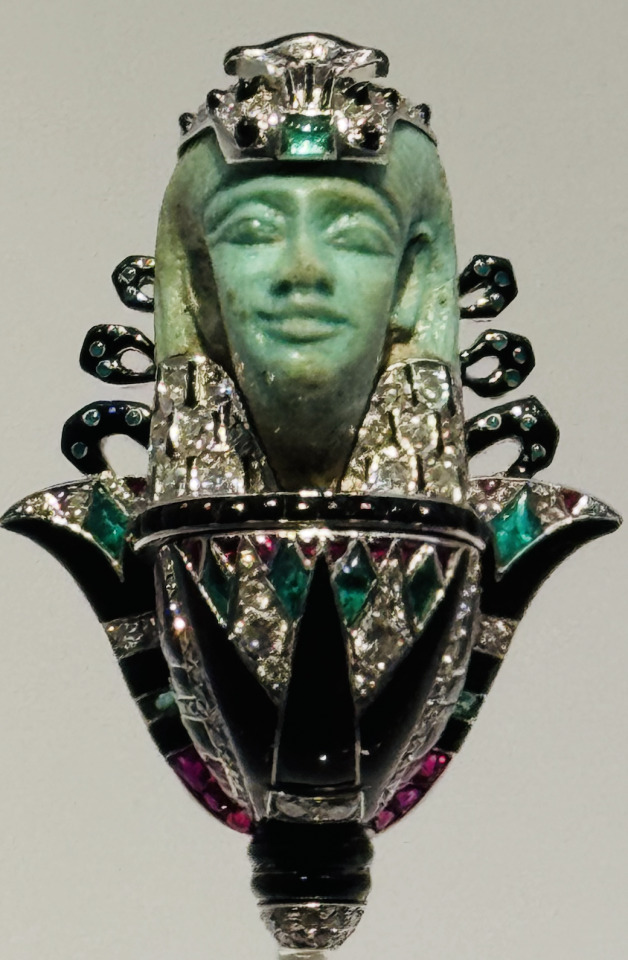
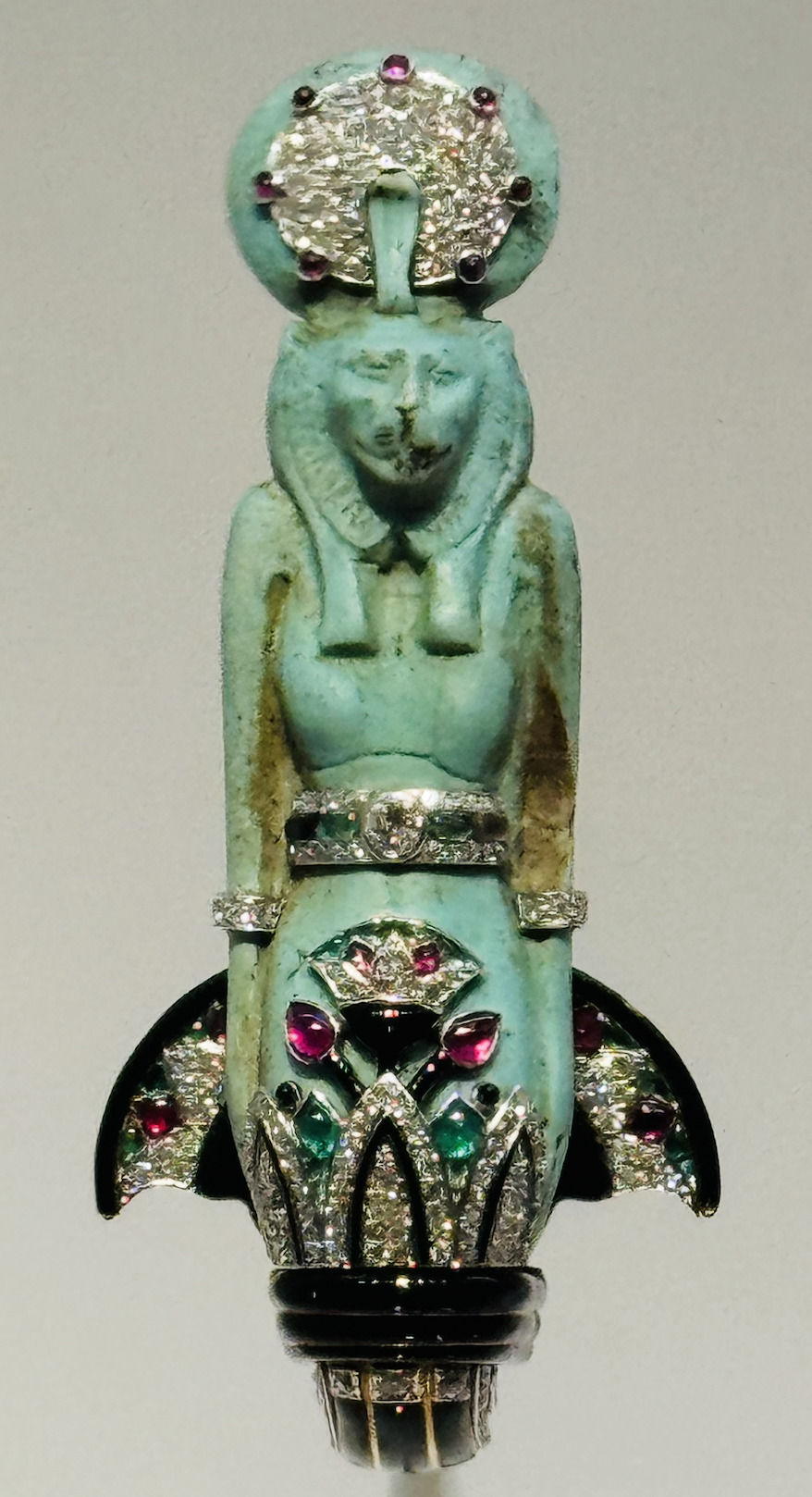
Tiger Bracelet
Cartier Paris, special order, 1956
Commissioned by the Duchess of Windsor
Onyx, emeralds, diamonds ranging from yellow to gold
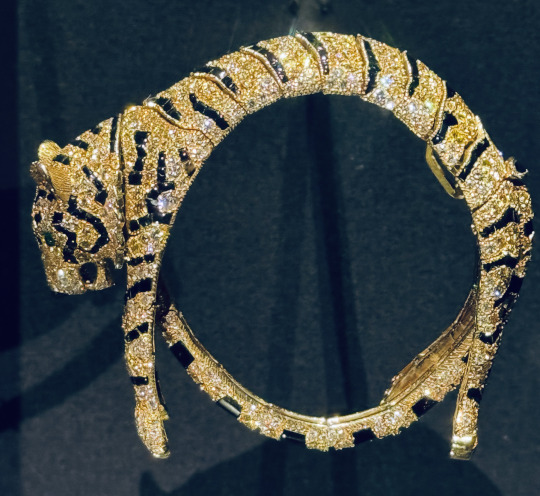
Jade Necklace
Cartier Paris, 1934
Owned by Barbara Hutton
Jadeite, rubies, diamonds, platinum, gold
The exceptional color and translucency of these matching 27 jadeite beads make this necklace one of the finest jade jewels ever made. In 1933, Alexis Mdivani, husband of American heiress Barbara Hutton, brought these beads to Cartier to add a diamond clasp, which Hutton swapped the following year for the current ruby mounting.

Necklace
One of the most famous jewellery lovers of the 20th century, actor Elizabeth Taylor received this necklace from her third husband, film producer Mike Todd.
“It was like the sun — lit up and made of red fire,” she recalled later.
Originally part of a parure (a set of matching jewels), it features exceptional Burmese rubies nestled into a latticework of diamonds.
Cartier Paris, 1957; modified in 1953
Owned by Elizabeth Taylor
Materials: Rubies, diamonds, platinum, yellow and white gold
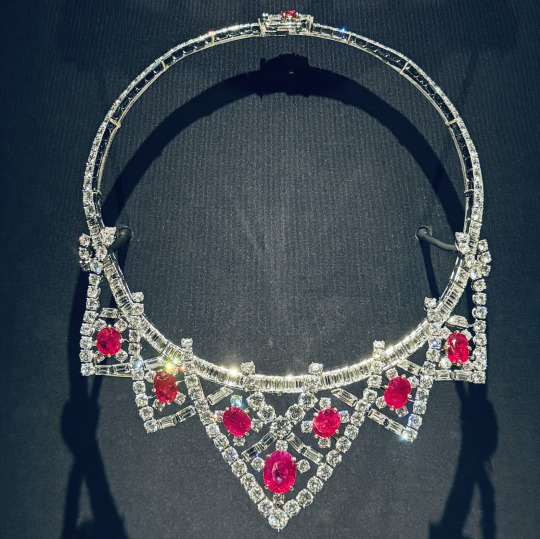
And a few more I don't have descriptions for:
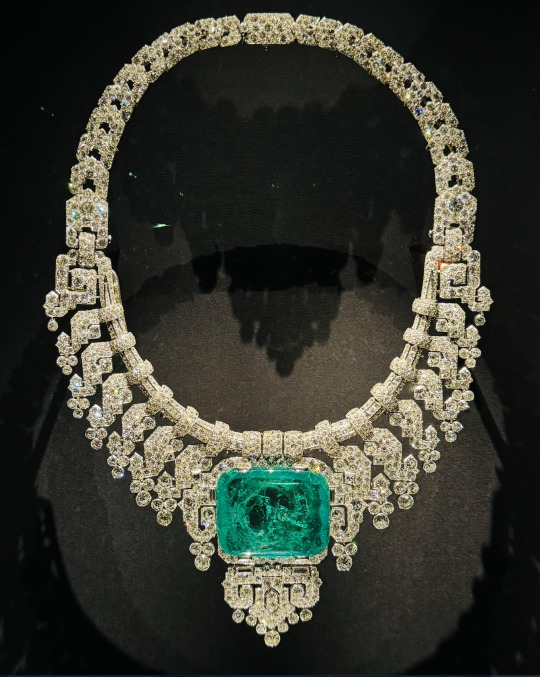
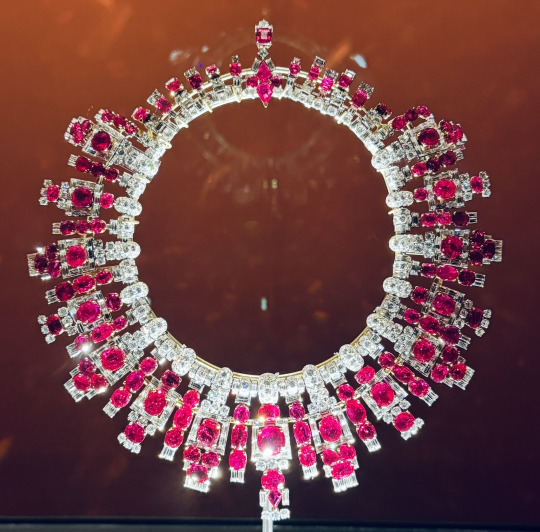

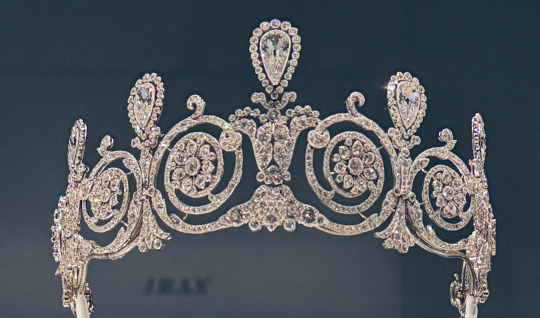
15 notes
·
View notes
Text

Ancient Egyptian hippo & hedgehog squad at the Brooklyn Museum!
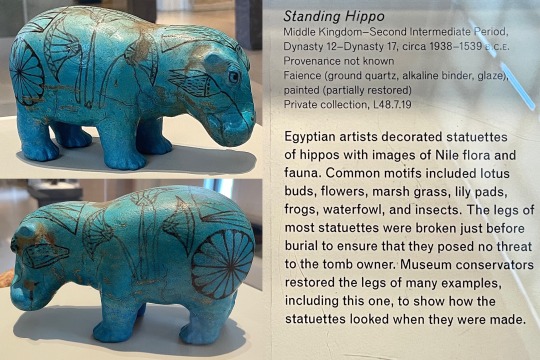
Standing Hippo
Middle Kingdom 2nd Int. Per. Dyn.12-17 c1938-1539BCE
Faience
“Egyptian artists decorated statuettes of hippos with images of Nile flora & fauna. Common motifs included lotus buds, flowers, marsh grass, lily pads, frogs, waterfowl, & insects. The legs of most statuettes were broken just before burial to ensure that they posed no threat to the tomb owner. Museum conservators restored the legs of many examples, including this one, to show how the statuettes looked when they were made.”
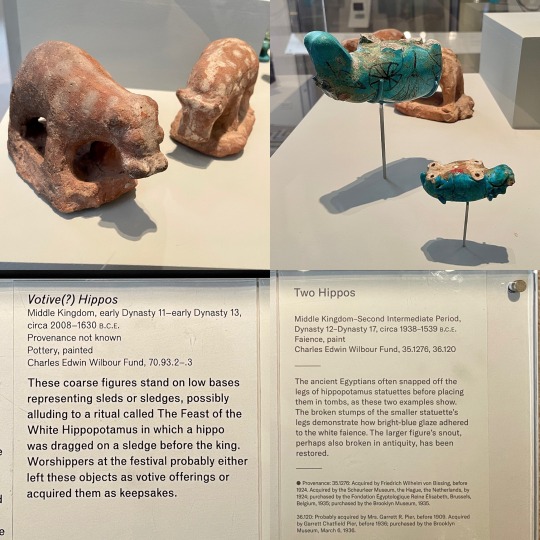
L: Votive(?) Hippos
Middle Kingdom Dyn.11-13 c2008-1630BCE
Painted pottery
“These coarse figures stand on low bases representing sleds or sledges, possibly alluding to a ritual called The Feast of the White Hippo in which a hippo was dragged on a sledge before the king. Worshippers at the festival probably either left these objects as votive offerings or acquired them as keepsakes.”
R: Two Hippos
Middle Kingdom Dyn.12-17 c1938-1539BCE
“The ancient Egyptians often snapped off the legs of hippopotamus statuettes before placing them in tombs, as these two examples show. The broken stumps of the smaller statuette's legs demonstrate how bright-blue glaze adhered to the white faience. The larger figure's snout, perhaps also broken in antiquity, has been restored.”
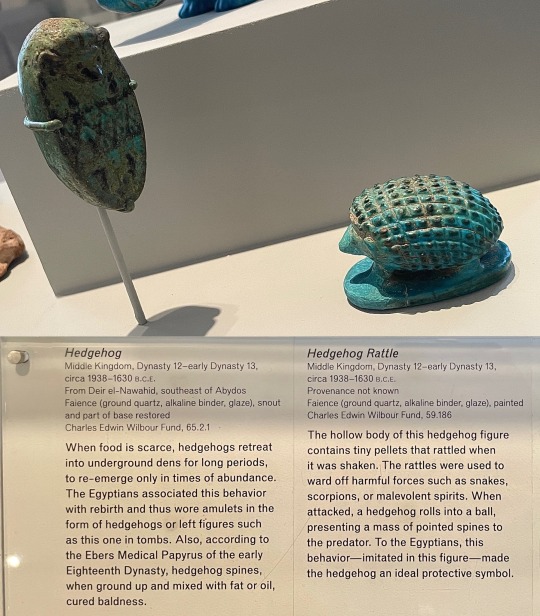
L. Hedgehog Rattle
Middle Kingdom Dyn. 12-13 c1938-1630BCE
Faience, 7.6 x 4.4 x 3.5 cm
“The hollow body of this hedgehog figure contains tiny pellets that rattled when it was shaken. The rattles were used to ward off harmful forces such as snakes, scorpions, or malevolent spirits. When attacked, a hedgehog rolls into a ball, presenting a mass of pointed spines to the predator. To the Egyptians, this behavior-_imitated in this figure-made the hedgehog an ideal protective symbol.”
R. Hedgehog Figurine
Middle Kingdom Dyn. 12-13 c1938-1630BCE
Faience, 4.2 x 4.1 x 7.1 cm
“When food is scarce, hedgehogs retreat into underground dens for long periods, to re-emerge only in times of abundance.
The Egyptians associated this behavior with rebirth and thus wore amulets in the form of hedgehogs or left figures such as this one in tombs. Also, according to the Ebers Medical Papyrus of the early Eighteenth Dynasty, hedgehog spines, when ground up and mixed with fat or oil, cured baldness.”
(note: labels are reversed - rattle is on L & figurine on R)
#animals in art#ancient art#Egyptian art#Ancient Egyptian art#Ancient Egypt#Brooklyn Museum#museum visit#hippo#hippos#hippopotamus#hippopotamuses#hedgehog#hedgehogs#pair#ceramics#pottery#faience#funerary art#votive#figurine#rattle
299 notes
·
View notes
Text

~ "An 18th century European blue and white faience vase with dahlias and delphiniums (ridderspore), s.d." by Clara Von Sivers (née Krüger). ~
2 notes
·
View notes
Text
The thing about airlines that I think is neat is every once in a while you stumble on something a little...idiosyncratic, something unique to a carrier. Also, I go on about flag carriers and highlighting their nation's culture, so I feel like I would be remiss not to mention this.
There are a lot of different styles of faience (pottery utilizing white tin glaze) peculiar to very specific places, and one such style is Delftware, from the Dutch city of Delft. Although this term can technically refer to any pottery made in this style regardless of color, Delftware is traditionally known for being white and blue (a common motif in pottery in general, thanks to cobalt oxide being practically indestructible).
Blue and white! Just like KLM's livery! Yet another thing they could have capitalized on but didn't - there was even a Delftware-inspired design representing the Netherlands back when British Airways was doing their World Tails - but that's beside the point. Apparently if you fly Business Class on KLM (their highest class, they don't have First Class) to a whole other continent they'll give you one of these.

image: KLM
Their Delft Blue houses are little pottery sculptures of actual house façades in the Netherlands. That little nozzle sticking out where the chimney would be is actually the point of entry to some Dutch gin. People don't really care about the gin as much as they do about the houses, though. There's one design for every year KLM has existed, and they release a new one on their birthday (7 October). People collect these. Apparently there's an app.

They're really neat. As far as I can tell this is the only airline that gives their passengers earthenware as a bonus for upgrading their seats. You know, I've had a bit of a tense history with KLM recently, their livery got worse and their cabin crew uniforms aren't even really worth talking about, but they've won back some of my respect with these little things. I'm going to tentatively say...your move, every other carrier.
40 notes
·
View notes
Text
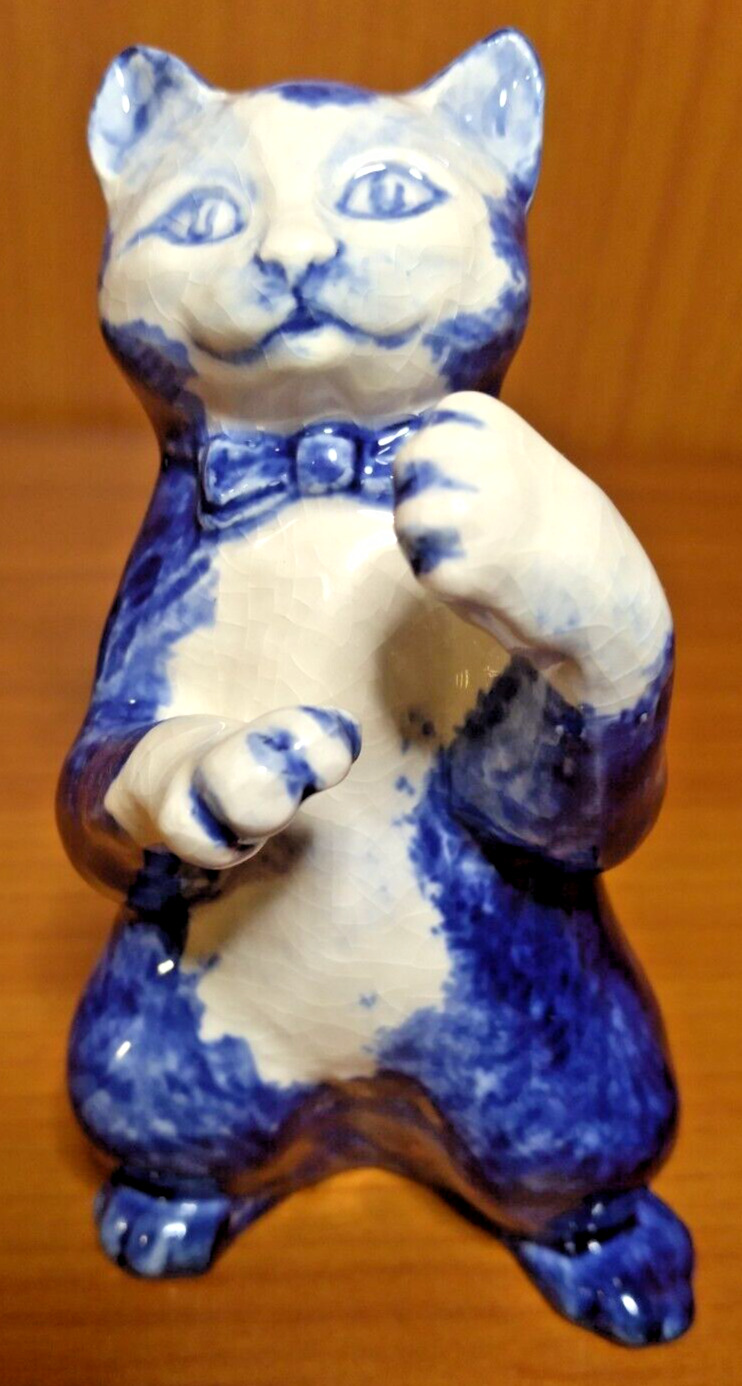

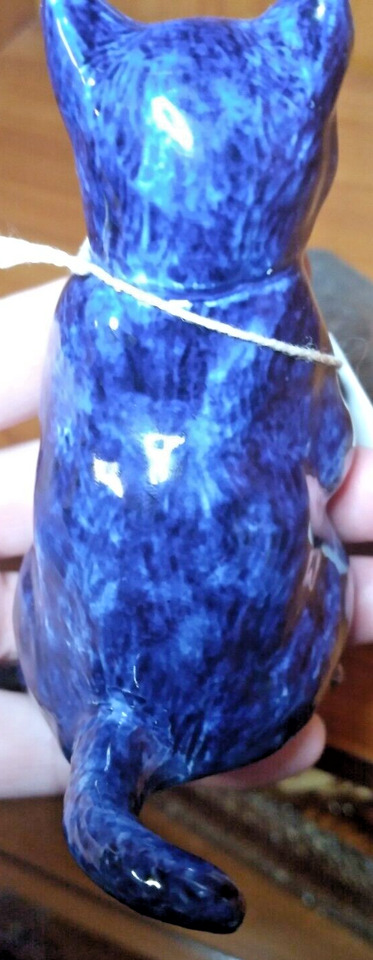
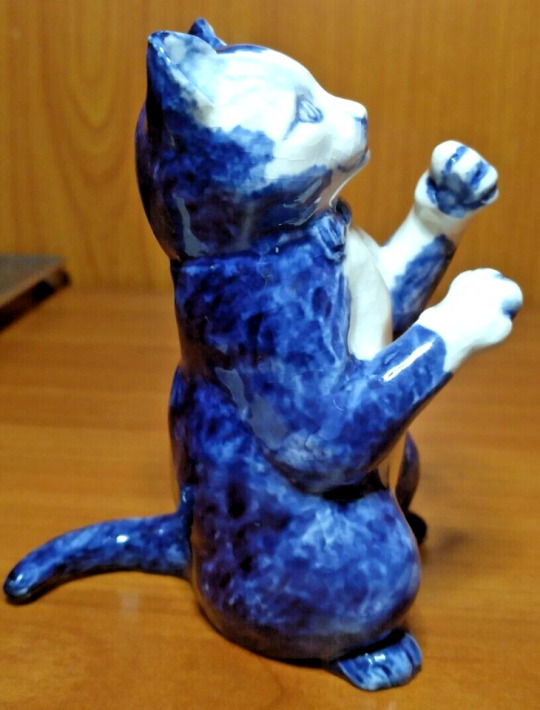
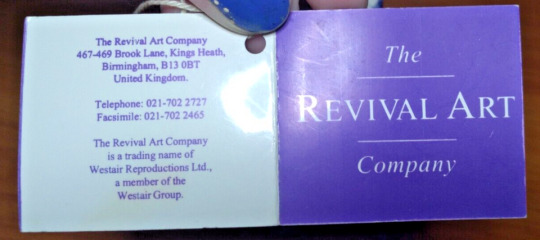
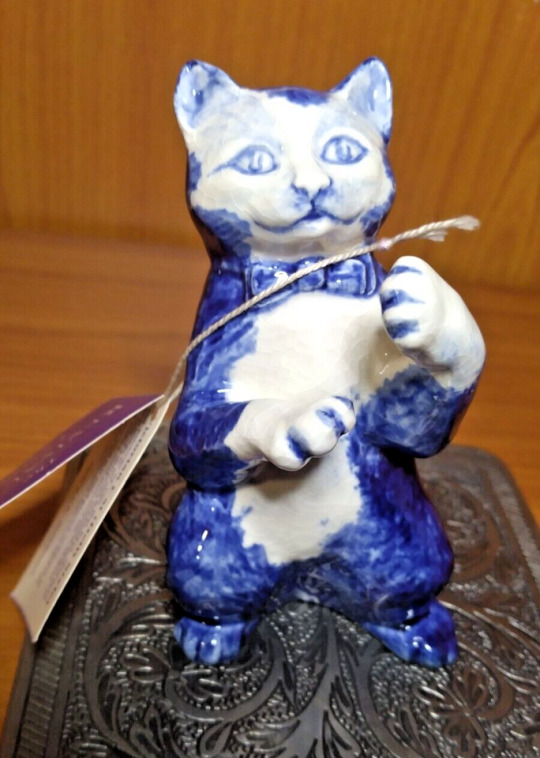

DELFT BLUE VICTORIAN CAT 'PLAYFUL' REVIVAL ART COMPANY ENGLAND 4" FAIENCE STYLE.FROM THE 1600'S TO THE PRESENT DAY CERAMIC ARTISTS HAVE USED THIS HAND PAINTED TECHNIQUE TO EMULATE THE FINE WHITE PORCELAINS OF CHINA AND JAPAN. EARLY BRITISH DELFT-TYPE WARES WERE VERY CLOSE IN STYLE TO THE CONTINENTAL MAJOLICA OR FAIENCE TYPE WARES.MADE IN U.K. HAND PAINTED. THE WHITE PAINT HAS NATURAL DESIGNED CRAZING AND THE BLUE IS SMOOTH.STOCK CODE: VPC/VSC/VCC.THE SCULPTURE COLLECTION. VICTORIAN CAT (DELFT STYLE). WEARING A CUTE BOW TIE.THIS CHARMING CAT IS INSPIRED FROM SCULPTURES AND PAINTINGS OF CATS THAT HAVE APPEARED THROUGHOUT HISTORY. THE CAT HAS ALWAYS BEEN A POPULAR IMAGE IN ART AND THIS HAND PAINTED BLUE AND WHITE CAT IS REMINISCENT OF THE VICTORIAN STYLE.+++ONE OF A DELIGHTFUL COLLECTION OF THREE--A SINGING CAT, A PLAYFUL CAT AND A CROUCHING CAT, THEY MAKE A MOST ATTRACTIVE SET.FREE SHIPPING. MEASUREMENTS IN DESCRIPTION. THANK YOU!#DAWNETTSEMPORIUM, #BEAUTIFULMERMAIDQUEEN, #SHAUNALYNNSFOOD.
7 notes
·
View notes
Text

The tulip trees. Pyramids in blue and white faience with small mouths where each flower or especially each tulip was placed. A Dutch object spread throughout Europe since the 17th century and present in Old Houses of all sizes and shapes, alone or in pairs, from the smallest ones capable of holding a few flowers, to huge models that rise almost to the ceiling.
Ana Motta Veiga, Memories of the Ancient House
In the image, tulip trees from 1695.
5 notes
·
View notes
Text

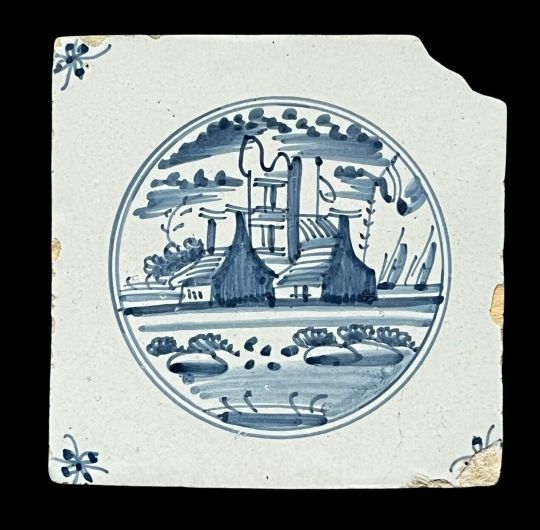
Antique Dutch Delft Faience Tile With House and Sailboat 18th Century Pine Frame ebay dave-h
Antique Dutch Delft Blue and White Tile with Houses and Boat 17th Century ebay easternredseas
2 notes
·
View notes
Text
White faience was not impossible to get, but it did take more effort than blue/green, since that was just "grind up the quartz into a powder, mash it together with water (which had natural salts in it), shape it, dry it, kiln it."
The colors of the "glaze" on faience depended on what was mixed into the quartz...and on whether or not it was dry or wet when kiln-fired.
That's the huge difference between Egyptian faience and ceramics made from clay. Clay has to be dry. It has to be bone dry before it can be fired, or microscopic water pockets will turn to steam and, trapped inside the smooth pressure of the clay, will explode, breaking the piece.
Faience is considerably more coarse. There's plenty of room for water to escape between the granules as it turns to steam. And when it does get to dry prior to being fired, there were often mineral salts in the mix that would self-glaze the piece, giving it color...but some would be different if you fired them while still wet, versus firing when dry.
I'm not completely sure how to get the white color shown above, but I do know it was considerably rarer. So that fish is a precious fish.
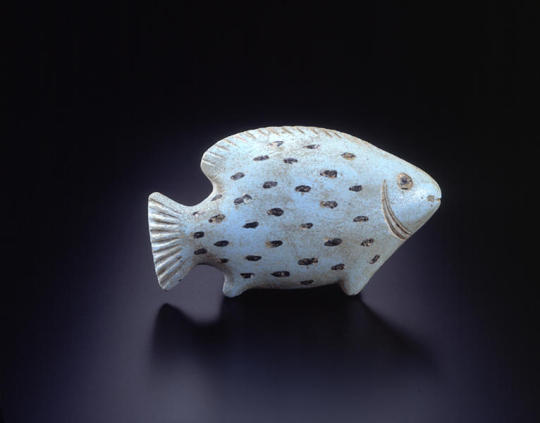
Your day would be better if you saw an Ancient Egyptian faience fish
9K notes
·
View notes
Text
Creating a list of hunger games names for future reference, here’s what I have for district 1:
District 1 is luxuries.
Jewelry, gems, etc names:
Carat/Karat
Sterling
Alloy
Gilt
Iridium
Patina
Vermeil
Zinc
Ruby
Topaz
Coral
Diamond
Garnet
Jade
Quartz
Carnelian
Jasper
Onyx
Opal
Citrine
Agate
Zoisite
Amber
Emerald
Kunzite
Peridot
Malachite
Lapis
Lazuli
Azurrite
Chalcedony
Kyanite
Turquoise
Amethyst
Pearl
Nacre
Jet
Hematite
Alabaster
Abalone
Alexandria
Beryl
Crystal
Ivory
Shell
Amulet
Bezel
Briolette
Bulla
Cannetille
Chatelaine
Collet
Facet
Diadem
Tiara
Enamel
Etch
Etui
Faience
Fleur; Delis
Grisaille
Halo
Lavaliere
Locket
Luster
Matte
Millifiori
Moval
Negligee
Niello
Parure
Pique
Riviere
Torsade
Trellis
Bijouterie
Cloisonne
Mohs
Elegance
Iridescence
Precious
Radiance
Unique
Scent names (for perfumes, soaps, candles, etc) including some scientific terms I saw
Rose
Apricot
Verbena
Ginger
Jasmine
Lavender
Lilac
Violet
Eucalyptus
Almond
Cassia
Cinnamon
Vanilla
Anise
Tarragon
Thyme
Floral
Fragrance
Aroma
Methyl/Ethyl
Isomyl
Octyl
Myrcene
Geraniol
Nerol
Citral
Linalool
Anisole
Plus colors (obv a Covey thing, but also something that might be a thing where dyes and makeup is made?)
Pinks:
- Rose (also a red)
- Cerise
- Kobi
- Rosevale
Reds:
- Ruby
- Burgundy
- Carmine
- Crimson (Crimsyn)
- Scarlet (Scarlette)
- Claret
- Vermillion (Mill)
- Maroon
Oranges:
- Amber
- Sienna
- Umber
- Saffron
- Ochre
- Sunset
Yellows:
- Canary
- Chartreuse
- Citrine
- Lemon (Lemyn)
- Hansa
- Persimmon (sounds like a last name)
- Tangerine
Greens:
- emerald (Emma)
- Celadon
- Olive (Olivia, Oliver, etc)
- Veridian (Veri)
- Kelly
Blues:
- Sapphire
- Sky
- Cerulean
- Cobalt
- Cyan
- Teal
- Turquoise
- Navy
- Glaucous
- Indigo (Indi)
- Lapis
- Periwinkle (Peri, Perri)
Purples:
- Amethyst (Amy, Amathest)
- Fuchsia
- Lavender
- Violet (Viola)
- Lilac
- Magenta (Maggie)
- Mauve
- Wisteria
Grays and Blacks:
- Ash
- Ebony
- Jet
- Slate
- Onyx
- Pewter
Browns:
- Almond
- Honey
- Coffee (Cofi, Kofi)
- Hazel
- Apricot
- Beige
- Cedar
- Champagne (Shampane)
- Khaki (Caiki)
- Taupe
- Fallow
- Isabelline
- Kobicha
- Mahogany
- Russet
- Sepia
Whites:
- ivory
- Vanilla
Modifiers:
- Pastel (Pastelle)
- Neon (Nion)
- Vivid
- Royal
1 note
·
View note
Text
Southern Cemetery

Located in the southwestern corner of King Djoser’s funerary complex in Saqqara, the Southern Tomb is part of what’s considered the oldest stone building in human history, dating back to the Third Dynasty of the Old Kingdom. Discovered in 1928 by British Egyptologist Cecil Malaby Firth, the tomb was given the name it still holds today.
This lesser-known treasure is an essential highlight for those exploring Egypt Tours, as it unveils mysteries that even seasoned travelers find captivating.
The tomb comprises two main components. Above ground, a rectangular stone structure is decorated with alternating projections and recesses—an ancient Egyptian motif—crowned by a frieze of cobra heads, symbolizing divine protection and kingship.
Descending into the tomb, visitors encounter a sloping passage that leads to a deep shaft measuring 7.5 meters wide and 31 meters deep. At its bottom lies a burial chamber housing a colossal sarcophagus made of 16 massive blocks of pink granite. Its dimensions are nearly identical to the one beneath the Step Pyramid, reinforcing its ritual significance.
For those enjoying Egypt Classic Tours, this site offers a perfect example of architectural continuity in ancient burial traditions.
The tomb’s underground corridors are lined with brilliant blue faience tiles, reminiscent of those adorning the Step Pyramid’s subterranean chambers. One corridor contains three false doors, each bearing inscriptions of King Djoser celebrating the Heb-Sed Festival, a ritual marking the rejuvenation of his reign.
In these scenes, the king dons the traditional White Crown of Upper Egypt, reaffirming his power. Exploring these corridors is a highlight for those opting for Egypt Day Tours.
Historians debate the tomb’s purpose. Some believe it was intended for one of Djoser’s principal wives, while others suggest it may have served to preserve the royal organs post-embalming—such as the stomach, intestines, and liver.
However, renowned French Egyptologist Jean-Philippe Lauer—who devoted over 70 years to restoring the complex—believed the tomb served a symbolic purpose, mirroring the royal tombs of Abydos.
If you're beginning your journey from the capital, this mystery-laden monument is easily accessible via Egypt Day Tours from Cairo.
In 2006, a full-scale restoration project began. The mission included reinforcing the subterranean walls and ceilings, reassembling the granite sarcophagus, and securing the faience tiles to restore their brilliance. Accessibility was also improved, with new flooring, lighting, and a staircase to facilitate visits.
This makes it a great stop for travellers enjoying seasonal adventures Egypt Easter Tours, or even for cruise travellers enjoying quick inland discoveries via Egypt Shore Excursions.
The Southern Tomb offers not just historical insight but also architectural wonder. It is an ideal site for those interested in Egypt Tours Package that blends exploration with education, revealing the deeply symbolic and technical sophistication of ancient Egyptian civilization.
0 notes
Text
Tracing Chinoiserie: From 18th-Century France to CHUCUI PALACE’s Modern Craftsmanship
French Chinoiserie is a distinctive European decorative style that rose to prominence in the 17th and 18th centuries, born from the West’s romanticized imagination of Eastern culture. Highly favored by the French court from the reign of Louis XIV to Louis XVI, it indirectly inspired and influenced the emergence of Rococo art. During this period, large volumes of Chinese porcelain, lacquerware, silk, and other crafts entered the European market, sparking the imagination of artisans and artists. French craftsmen did not merely imitate Chinese art, but reinterpreted it through a Western aesthetic lens, integrating it into local artistic design. By the mid-18th century, Chinoiserie had reached its zenith across Europe, with royal and aristocratic patrons pushing the style to its peak — exemplified by the interiors of Petit Trianon in Versailles, a hallmark of this aesthetic.
As the 19th century unfolded, Chinoiserie continued to be reinterpreted across cultural domains. With globalization and deeper cross-cultural exchange, French Chinoiserie regained attention in the realms of luxury, fashion, and contemporary art, becoming a major source of design inspiration today.

Lingering Garden Wallpaper Mural on Sisal by York Wall Covering
An illustrative example is Lingering Garden Wallpaper Mural on Sisal by York Wall Covering, the oldest wallpaper company in the United States. Using soft tones typical of Chinoiserie, the work evokes a serene and mysterious Eastern garden landscape. Set against a white sisal (dragon beard grass) wallpaper base, the design features green, blue, and pink elements, with deliberate emphasis on blank space. The composition aims for natural flow and organic form. Unlike traditional gongbi-style paintings, the color treatment presents subtle Chinoiserie-style layering and Western-style shadowing, enhancing its decorative appeal while still retaining the linear precision and textural depth found in fine brushwork.
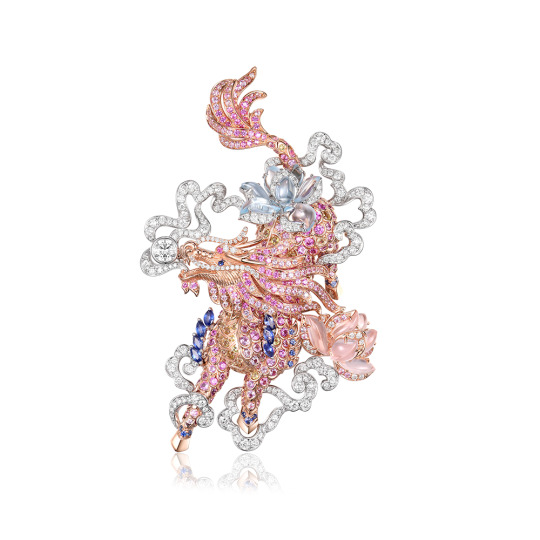
CHUCUI PALACE “Kirin in Clouds” Brooch
A leading example of Chinoiserie-style jewelry is the Kirin in Clouds brooch by CHUCUI PALACE. This work innovatively combines Chinese gongbi painting techniques, traditional Chinese carving, and Western-style gemstone setting. The composition is flowing, vibrant, and complex — masterfully weaving together multiple elements through interlacing, wrapping, and embellishment, establishing a refined balance of focus, spatial relationships, and layered dynamics. It adapts the traditional Chinoiserie totem of the kirin (mythical creature) to a contemporary context while honoring its symbolic reverence in Chinese culture.
The design abstracts and refines traditional cloud patterns into elegant, fluid curves that intertwine with the kirin, enhancing its sense of divinity and nobility. The cloud motifs interact with flowers and the kirin through shifting spatial layers, material contrasts, and intricate lines and surfaces — creating a rich, dimensional texture.
Color is applied through traditional Chinese gongbi heavy-paint techniques, using unified and nuanced gradients for a soft, delicate wash, while selective contrasting tones generate visual tension. The resulting kirin is ethereal and elegant — resonating with the maximalist, decorative nature of traditional imagery, while also aligning with a thoughtful modern reinterpretation.

Gien “France Chinoiserie Faience, 3 Garniture Items”
Another example comes from Gien, a famed French faience (tin-glazed earthenware) manufacturer active from the late 19th to early 20th centuries. The France Chinoiserie Faience, 3 Garniture Items set consists of two lidded decorative jars and a large lidded bowl with base. The pieces feature a rare light turquoise background with multicolored enamel decorations and blue-white glaze accents. This color palette, influenced by Chinese celadon and famille rose porcelain, was uncommon in European ceramics of the 18th and 19th centuries.
The central lidded bowl is flanked by Buddhist lion handles and topped with a knob shaped like a Taoist deity or monk. The base features heart- and scroll-shaped openwork carvings, a technique popular in 18th–19th century European ceramics and furniture, echoing Chinoiserie’s ornate style. The side jars feature birds perched on branches, blooming chrysanthemums and plum blossoms, all set against a blank background to highlight the main motifs. Buddhist lion handles with attached rings further express European aristocracy’s fascination with the exoticism of Eastern culture.
French Chinoiserie is not merely a romanticized recreation of Eastern culture from the 17th–18th centuries — it has continued evolving from the 19th century to the present, becoming a timeless aesthetic that spans decorative arts, architecture, fashion, and jewelry design. Its distinctiveness lies in reinterpretation rather than replication, using cross-cultural design language to imbue Eastern imagery with renewed life across eras.
York Wall Covering’s Lingering Garden reimagines Chinoiserie through the lens of contemporary spatial aesthetics; Gien’s faience set reflects European nobility’s admiration for Chinese ceramic craft; and CHUCUI PALACE’s fine jewelry extends and elevates Chinoiserie’s core spirit within luxury design. In today’s globalized world, Chinoiserie is no longer a one-way cultural transplant — it is a deeply integrated aesthetic expression. It maps the history of East-West artistic exchange while serving as a vibrant source of creative inspiration across time and cultures.
0 notes
Photo

A sunny corner of the kitchen
Make a sun filled corner of the kitchen into a relaxing place to read and enjoy an afternoon cup of coffee or tea. I’ve just returned home from running my morning errands, thrown my jacket over the arm of my chair, and I’m looking forward to a refreshing cup of coffee. I usually gather flowers from my garden in the morning and enjoy them in the kitchen before I take them to the living room and bedrooms in the afternoon. My favorite books are always close at hand. I enjoy referring to them for research and inspiration.
All of the furnishings pictured above are hand-me-downs or from second hand stores. An antique Chinese vase supports a cup of coffee and a white napkin handily. The French faience kitten with a ball has lived in many places in my house, usually where no one will trip over it. The sterling silver vase is vintage Gorham.
Photography by Mr. Sterling
#kitchen nook#french faience#antique Chinese vase#coffee break#table setting ideas#blue and white kitchen#cottage#country cottage#country kitchen#grandmillenial
4 notes
·
View notes
Text

statuette of Nemesis in the form of a female griffin with wings, Roman Egypt (2nd century CE), earthenware and blue faience with yellow faience necklace and black and white glazed eyes
currently in the collection of the Brooklyn Museum (accession no. 53.173)
#isaac.txt#archaeology#egyptology#egypt#egyptian archaeology#roman egypt#roman#art#nemesis#earthenware#faience#brooklyn museum
409 notes
·
View notes